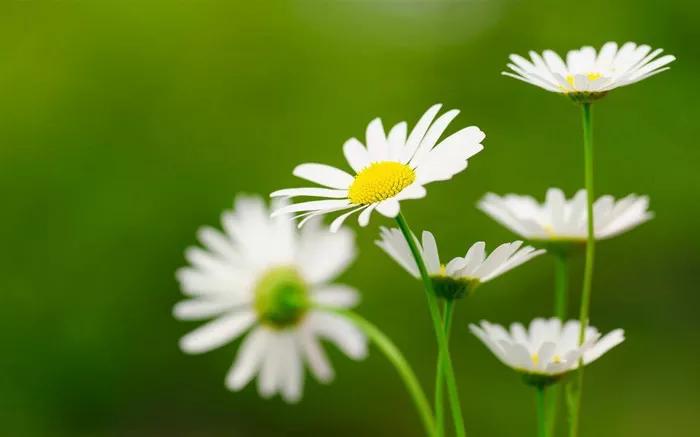Flowers have long captivated human imagination with their beauty, fragrance, and symbolism. Among the vast array of floral species adorning our planet, one humble bloom stands out for its ubiquity and charm: the daisy. From manicured gardens to rugged mountain slopes, daisies grace landscapes across continents, symbolizing purity, innocence, and simplicity. As we delve into the realm of botany and culture, we uncover the secrets behind the daisy’s universal appeal and unrivaled prevalence.
The Daisy: A Global Phenomenon
Daisies, scientifically classified under the genus Bellis, belong to the Asteraceae family, commonly known as the aster, daisy, or sunflower family. With over 23,000 species distributed worldwide, the Asteraceae family represents one of the largest plant families on Earth. Among its diverse members, the daisy holds a special place, thriving in various climates and ecosystems, from temperate meadows to arid deserts.
Origins and Evolution
The evolutionary history of daisies traces back millions of years, with fossil evidence suggesting their presence during the Cretaceous period. Ancient daisies likely resembled their modern counterparts, characterized by their distinctive disk and ray florets arranged in a radial pattern. Over time, daisies adapted to diverse environments, developing unique adaptations to survive and reproduce in changing landscapes.
Diversity of Daisy Species
While the term “daisy” commonly refers to plants within the Bellis genus, numerous other species share similar characteristics and are colloquially referred to as daisies. Among the most recognizable members are the English daisy (Bellis perennis), oxeye daisy (Leucanthemum vulgare), and Shasta daisy (Leucanthemum x superbum). Each species boasts distinct features, ranging from petal color and size to growth habit and ecological preferences.
Cultural Significance
Beyond their botanical attributes, daisies hold profound cultural significance in human societies worldwide. Across centuries and civilizations, daisies have inspired artists, poets, and storytellers, symbolizing concepts of purity, innocence, and eternal love. In folklore and mythology, daisies are associated with tales of beauty, resilience, and divine favor, cementing their status as symbols of hope and renewal.
Literary and Artistic References
From William Wordsworth’s poetic ode to the daisy to Vincent van Gogh’s iconic depictions in his masterpieces, daisies have left an indelible mark on literature and art. Writers and artists throughout history have drawn inspiration from the daisy’s understated elegance and enduring allure, using it as a motif to convey themes of love, loss, and the passage of time.
Ecological Importance
In addition to their cultural significance, daisies play vital ecological roles within their respective habitats. As primary producers, daisies contribute to ecosystem stability by capturing solar energy through photosynthesis and providing food and habitat for diverse organisms. Their intricate floral structures also facilitate pollination by attracting a myriad of insect pollinators, including bees, butterflies, and beetles.
Gardening and Horticulture
Daisies’ adaptability and aesthetic appeal have made them popular choices for gardeners and horticulturists worldwide. Whether planted as ornamental borders, ground covers, or focal points in landscape designs, daisies add a touch of natural beauty to gardens and outdoor spaces. With their resilience and ease of cultivation, daisies continue to enchant garden enthusiasts of all ages and backgrounds.
Medicinal and Culinary Uses
Beyond their ornamental value, daisies possess medicinal and culinary properties valued by traditional healers and herbalists. Herbal preparations derived from daisy flowers and leaves are used to alleviate various ailments, including inflammation, digestive disorders, and respiratory conditions. In culinary traditions, daisies are occasionally used as decorative garnishes or ingredients in salads, teas, and infusions.
Challenges and Conservation
Despite their widespread distribution, daisies face numerous threats to their long-term survival, including habitat loss, climate change, and invasive species competition. Human activities such as urbanization, agriculture, and deforestation continue to diminish natural habitats and disrupt ecosystems, posing significant challenges to daisy populations worldwide. Conservation efforts aimed at preserving native habitats and promoting sustainable land management practices are essential to safeguarding daisies and their ecological communities for future generations.
Conclusion
In conclusion, the daisy stands as a testament to nature’s enduring beauty and resilience. From its ancient origins to its modern-day ubiquity, the daisy’s journey reflects humanity’s timeless fascination with the natural world and its wonders. As we marvel at the delicate petals and vibrant hues of daisies blooming in fields and gardens, let us cherish and protect these beloved flowers, ensuring that their legacy of beauty and inspiration endures for generations to come.


